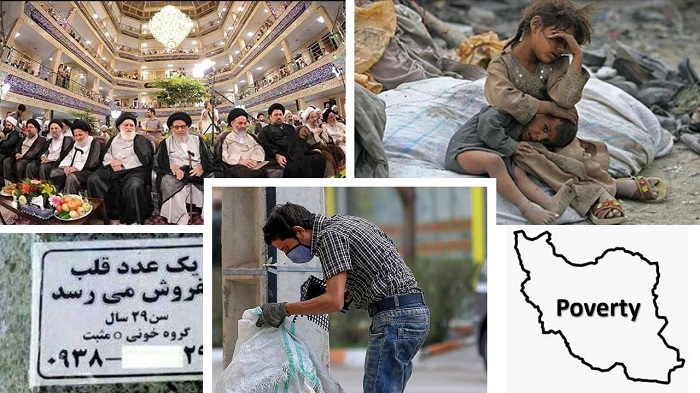
As October 17 marked the International Day for the Eradication of Poverty, many countries around the world are taking steps to help the vulnerable people in their societies in order to reach this goal. On the other hand, the levels of poverty are so severe in Iran that its citizens are selling their body parts and vital organs to cover expenses and provide much needed money for their families.
Last year, the story of a 29-year-old father who wanted to sell his heart went viral on social media. The man had advertised the sale of his heart for one billion tomans (about $367,000), so that he could ensure that his family would be supported financially for the future.
The National Council of Resistance of Iran (NCRI) said, “Selling body parts is not new in Iran. Walls across the country are covered with advertisements of people offering their organs, even vital ones such as bone marrow, heart, and cornea.”
The Iranian Resistance outlined in a report published in 2019 that both men and women resort to selling their organs as a last resort. Those wishing to sell their kidney are generally between 22 and 34 years of age, but some older people have also offered their organs on the black-market also.
While the Iranian regime continue to waste Iran’s resources to fund their malign activities, more and more Iranian people are falling deeper into poverty on a daily basis.
The NCRI said, “The poverty line in Iran varies from 10 to 15 million tomans. Meanwhile, the salary base of the Iranian workers and employees is around four million tomans.”
The state-run Donyay-e Eghtesad media outlet said on October 4 that between 2012 and 2019, 4 million people have fell into poverty, with the rise of the poverty line increasing from 6.4% to more than 12%.
Despite the Iranian regime being responsible for the rising inflation rates and the dire economic situation in Iran, regime officials have tried to blame the skyrocketing prices on the increase of salaries this year. Whilst there was a 39% increase in peoples’ salaries, this amount barely covers 37% of the living costs of Iranians, leaving workers barely able to make ends meet until the end of the month.
The NCRI said, “The International Day for the Eradication of Poverty on October 17 was signed in 1987 when a hundred thousand people gathered at the Trocadéro in Paris to honor the victims of extreme poverty, violence, and hunger.”
The purpose of the day of observance is to acknowledged that poverty is a violation of human rights and urge countries around the world to come together and ensure that these rights are respected where their own citizens are concerned. Since 1987, many governments have used the day to continue with their commitments to eradicate poverty and provide help and support for those in need.
The regime, however, have yet to take any steps to assist Iranians in their struggles. People are committing suicide as they see no other way out, or they are forced to scrounge for food in garbage bins, or sell their body parts to raise much needed funds to support themselves and their families.
As the level of poverty deepens in Iran, the more society’s restiveness is increased. In the past two years, major uprisings have taken place and with the current crises, another one may be on the horizon.
The NCRI said, “There are ongoing protests in Iran by people from all walks of life. Thus, the people’s hatred toward the regime increases parallel to poverty in Iran, and it’s upon the global community to preserve the status quo or help to change it.”